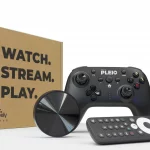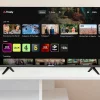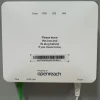TP-Link Boasts “breakthrough” with First Wi-Fi 8 Connectivity Test

Networking kit manufacturer TP-Link, which develops a lot of broadband routers, WiFi extenders and smart home devices for network operators and consumers, today claims to have hit a “major technological milestone” after they conducted their first successful connectivity test using a prototype of the next gen Wi-Fi 8 standard (802.11bn – Ultra High Reliability).
As we’ve previously reported, Wi-Fi 8 will focus more on improving network reliability than boosting raw throughput speed (Wi-Fi 8 technology summary). The final standard for this isn’t expected to be fully completed until May 2028, but that hasn’t stopped manufacturers conducting their own tests based on the earliest available technical draft.
One of the first out of the gate seems to be TP-Link, which has worked with several industry partners to demonstrate its first successful data transmission using a prototype Wi-Fi 8 device. The test successfully validated both the Wi-Fi 8 beacon and data throughput, which helps to underscore the feasibility of the technology and marks a key milestone in global Wi-Fi 8 development.
Advertisement
Sadly, the announcement doesn’t say anything more than that or provide any pictures of the test, which is a bit disappointing.
Key Wi-Fi 8 Technologies (TP-Link)
DRU (Distributed tone Resource Units)
The device spreads its uplink tones across a wider band, increasing the overall transmitting power. DRU helps low power or faraway devices be heard cleanly by the router. Uploads (like video calls or cameras) become more reliable.ELR (Enhanced Long Range)
More robust packet structure and coding improve coverage at the edges of your home. Devices can stay connected farther from your router. Great for upstairs rooms, garages, and outdoor cameras.UEQM (Unequal Modulation)
Each WiFi stream can run at the best rate it can manage instead of all streams using the same rate. A weak stream no longer drags the strong ones down. You get more consistent speed when signal quality varies.New MCS (New Modulation and Coding Schemes)
When your signal weakens slightly, like when moving farther from your router, your device may suddenly slow down causing lag or buffering. WiFi 8 adds new MCS levels to smooth out these speed drops. That means more stable connections and consistent speeds across your whole home.DSO (Dynamic Sub-band Operation)
Devices today get fixed chunks of bandwidth even if they do not need it, which wastes capacity and causes congestion. DSO lets the router assign channels more precisely based on each device’s actual needs. This smarter channel frees up space for other traffic, reduces slowdowns, and improves performance across the entire network.NPCA (Non-Primary Channel Access)
Most devices today can only transmit on the router’s main channel, even if nearby channels are completely clear. NPCA allows devices to use alternate sub-channels when the main one is busy. This helps avoid traffic jams, reduce delays, and keeps your connection fast even when the network is congested.Improved Seamless Roaming
Move from room to room without losing your connection. Your devices automatically hand off between access points without a discrete disconnect/reconnect, supporting a continuous connection. You get no drop calls, no frozen video, and no interruptions.Multi AP (Access Point) Coordination
WiFi 8 APs (including routers, mesh nodes, and range extenders) align timing, steer signals with precision, and adjust power to reduce overlap. This coordination keeps interference low and speeds steady in mesh setups or homes with multiple access points.
Mark is a professional technology writer, IT consultant and computer engineer from Dorset (England), he also founded ISPreview in 1999 and enjoys analysing the latest telecoms and broadband developments. Find me on X (Twitter), Mastodon, Facebook, BlueSky, Threads.net and Linkedin.
« Vodafone UK Suffer Major Outage of Mobile and Broadband Connectivity UPDATE4
Advertisement
Leave a Reply Cancel reply
Privacy Notice: Please note that news comments are anonymous, which means that we do NOT require you to enter any real personal details to post a message and display names can be almost anything you like (provided they do not contain offensive language or impersonate a real person's legal name). By clicking to submit a post you agree to storing your entries for comment content, display name, IP and email in our database, for as long as the post remains live.
Only the submitted name and comment will be displayed in public, while the rest will be kept private (we will never share this outside of ISPreview, regardless of whether the data is real or fake). This comment system uses submitted IP, email and website address data to spot abuse and spammers. All data is transferred via an encrypted (https secure) session.























































First: Nobody needs Wi-Fi 8
Exactly! Wifi 6 is good enough as is.
Lots of places will benefit from Wi-Fi 8. Office use needs it to improve reliability. Hot desking when you need to connect to live servers would certainly benefit. Yes I could use Tmux or Screen on Linux hosts but having to reconnect in the middle of a job is pain. Home use of Wi-Fi is less of a use case sure. But this standard isn’t just for home use. It is primarily targeted at business users.
Your so right, and “640K ought to be enough for anybody.”,
“There is no reason for any individual to have a computer in his home.”,
“Television won’t last because people will soon get tired of staring at a plywood box every night.”,
“There’s no chance that the iPhone is going to get any significant market share.”,
“Spam will be a thing of the past in two years’ time.”,
“The telephone has too many shortcomings to be seriously considered as a means of communication.”.
Also..
“The Internet is just a fad.”
Most people won’t, mainly because it will take a while for devices to catch up.
If it is more reliable than Wi-Fi 7 then fine, because Wi-Fi 7 seems to be hit-and-miss, but then any Wi-Fi technology that uses 5GHz or above. 2.4GTGhz, while on the slow side, was stable and reliable and could and still can go through pretty thick walls, which is maybe why a lot of smart home devices still use it.
Do people need it, probably not, but they will still think they do, the same as people think they need Wi-Fi 7 and manufactures of devices, routers, phones will try to persuade people that they do need it.
My router is Wi-Fi 6, the only device I have got that would use it is my Mac mini, that uses Wi-Fi 6E, but it is wired. I am getting a new phone soon, so that may. If the router go belly up, then I will replace it with what ever is available at the time, but I am not going to buy a new one for the latest Wi-fi.
@John, there are some things that do make a difference when updated, I mean makes a lot of difference, that is noticeable, then there are others that don’t. Using a 486 machine these days say would be impossible for most tasks, we use computers and computer type devices for these days. Not saying one can’t be used, simple things like word processing a 486 would be fine.
The reason why I have not updated my old PC for 8 years is because while CPUS have got faster, in real use, there is little difference.
A 1 hour video would take a few seconds less to render on newer machine than on my PC. which is something I used my PC for at the time.